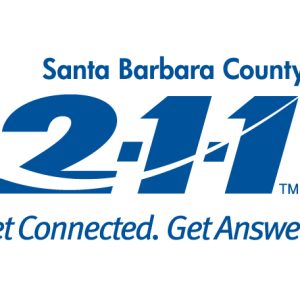
Every hour of every day, people need essential health and human services. Callers are looking for health care, childcare, domestic abuse support, counseling, food, shelter and more. The 2-1-1 Helpline provides residents one centralized location to get critical health and human services information they need 24 hours a day / 7 days a week. 2-1-1 callers include veterans, parents, seniors, homeless and many others.
BENEFITS TO THE USER
● Available 24 hours a day, 7 days a week
● Calls are answered by trained call specialists
● Offered in 150 languages
● Free and confidential service
● Efficient, fast, and easy to use
● Centralized access to information
● One call connects individuals to resources in the community
BENEFITS TO THE COMMUNITY
● Easily accessible to everyone in Santa Barbara County
● Information is accurate and reliable – data is updated on a regular basis
● Promotes self-reliance
● Strengthens the community by connecting people to the help that they need
● Helps communities anticipate demand for services and identify changing needs
2-1-1 IN SANTA BARBARA COUNTY
● 2-1-1 was first implemented in Santa Barbara County in 2005.
● In 2013, the service became un-hosted and efforts to seek a new provider commenced.
● In November of 2014, Community Action Commission of Santa Barbara County became the 2-1-1 Helpline host with call center services handled by a subcontractor.
● 2-1-1 Helpline has undergone an intensive data “scrub” to ensure that information is updated, accurate and comprehensive. The database now has over 2000 local health and human services resources.
● There is an average of 400 calls received per month in Santa Barbara County.
● A user friendly website was developed and can be accessed at: www.211sbco.org.
2-1-1 FACTS
● Authority for the operation of 2-1-1 information and referral services using the three-digit dialing code was first enacted by the Federal Communication Commission (FCC) in 2000.
● The FCC found that there was a demonstration of sufficient public benefit to justify the use of scarce resources and assigned 2-1-1 to be used for access to community information and referral services.
● The Commission charged each state with the task of implementing the 2-1-1 program. In California, the California Public Utilities Commission (CPUC) is responsible for the operation, oversight, regulation and authority of the 2-1-1 dial code. A CPUC ruling states, “The use of the 2-1-1 dialing code has the potential to provide California with easy access to information concerning child care services, housing assistance, physical and mental health resources, aging and hospice services, educational and other programs. Such information is not currently available through the 911 emergency code or the 311 non-emergency code.”
● Accessible to almost 35.7 million Californians in 35 counties, 2-1-1 service covers over 96 percent of the state’s population.
● Nationally, 2-1-1 covers 90 percent of the US population.
Currently, this essential service receives funding from the County of Santa Barbara, First Five, City of Santa Barbara and Emergency Public Information Communicators (EPIC).
For more information, visit www.cacsb.com.

